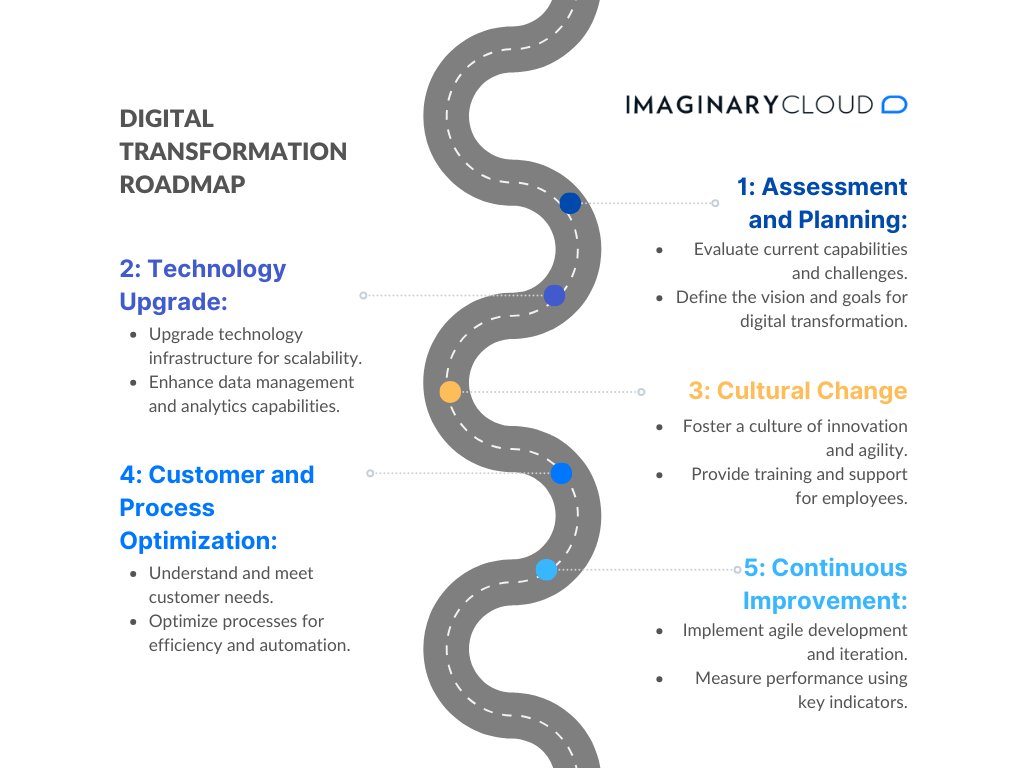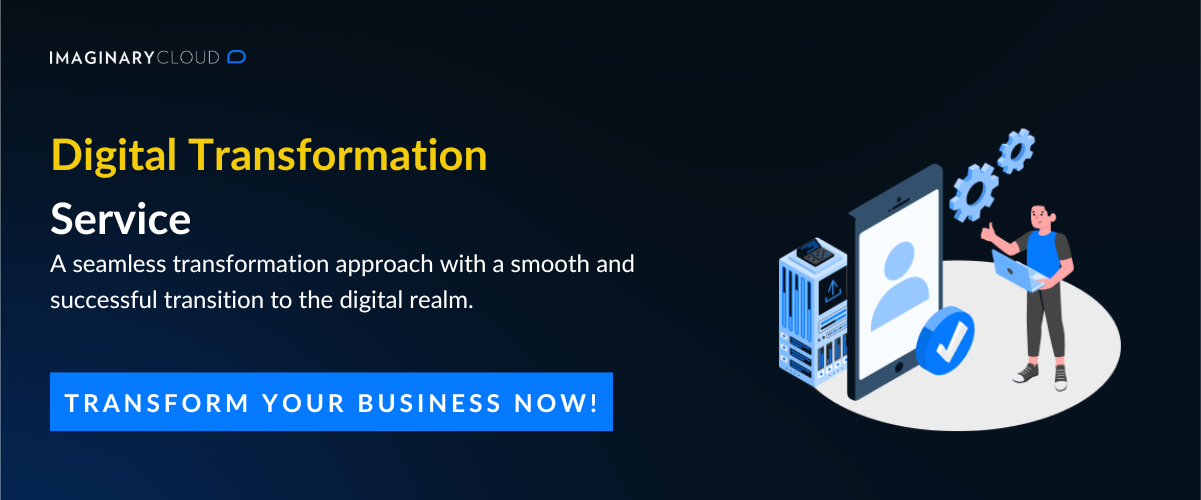In today's fast-paced digital era, terms like digitization, digitalization, and digital transformation are tossed around a lot. But what do they really mean, and how are they different? Whether you're a tech enthusiast, a business owner, or just someone curious about the digital world, understanding these concepts is crucial. Let's dive in and demystify these terms together!
Table of Contents
What is Digitization?
What is Digitalization?
What is Digital Transformation?
Trends in Digitization, Digitalization & Digital Transformation
Final Thoughts
What is Digitization?
Digitization is the process of converting information from a physical, analog format into a digital format. This could involve scanning a printed document to create a PDF, converting a VHS tape into a digital video file, or even turning handwritten notes into a digital text document. It's about creating a digital replica of physical information.
a. The Global Scope of Digitization
The reach of digitization is extensive and growing rapidly. It's estimated that nearly two-thirds of the world's population should be online by the end of 2023. This widespread adoption of the internet, with rates exceeding 90% in 55 countries, is enabled mainly by digitization efforts.
b. Implications of Digitization
Digitization has profound implications for access to information, education, and opportunities. It's not just about preserving information but also about making it more accessible and shareable. With digitized content, barriers such as geographical limitations and physical deterioration of materials are significantly reduced.
c. Challenges and Considerations
The process of digitization also brings challenges. It requires infrastructure, such as scanners and computers, and skills to operate them effectively. Additionally, there's a need for strategies to ensure the long-term preservation and accessibility of digital data, as digital formats and storage media can become obsolete quickly.
d. Impact on Society and Culture
Digitization also has a cultural impact. It allows for the digital preservation of historical documents, artworks, and cultural artefacts, making them accessible to a global audience. This not only helps in preserving heritage but also democratizes access to culture and knowledge.
e. Digitization in Business
The Foundation of Digital Strategy
- Efficiency in Record-Keeping: A study by AIIM found that digitization can reduce document retrieval time by 50%, significantly enhancing operational efficiency.
- Compliance and Security: Digitization helps maintain regulation compliance and enhances data security.
Supporting Digitalization and Transformation
- Prerequisite for Advanced Digital Strategies: Digitization is a first step before implementing digitalization and digital transformation strategies.
- Case Example: The banking industry's shift from paper-based records to digital banking systems demonstrates the foundational role of digitization in enabling further digital advancements.
What is Digitalization?
Digitalization is the next step in the digital evolution. It refers to using digital technologies and digitized data to impact how work gets done, transform how customers and companies engage and interact, and create new digital revenue streams. It's about leveraging digitization to improve processes, enhance productivity, and foster innovation.
a. The Impact on Business and Society
The significance of digitalization is immense in today's business and societal landscapes. For instance, according to Gartner, 91% of companies are engaged in some form of digital initiative, and 87% of senior business leaders say digitalization is a priority. Digitalization isn't just about efficiency; it's about reimagining traditional business models and workflows in the context of the digital age.
b. Digitalization and the Global Economy
The global economic impact of digitalization is substantial. According to the International Data Corporation, worldwide spending on digital transformation technologies was projected to reach nearly $3.9 trillion in 2027. This staggering figure underscores digitalization's critical role in the modern economy, driving growth, innovation, and industry competitiveness.
c. The Role of Digitalization in Environmental Sustainability
An often overlooked aspect of digitalization is its potential contribution to environmental sustainability. Digitalization can lead to more sustainable business practices by optimizing processes and reducing resource consumption. For example, digital tools can enhance energy efficiency in manufacturing or reduce paper usage in offices, contributing to broader environmental goals.
d. Transforming Industries
Different sectors view digitalization through various lenses. In healthcare, it's about improving patient care through digital health records and telemedicine. Retail is about enhancing customer experience through e-commerce and digital marketing. And in education, digitalization transforms learning experiences through online platforms and digital resources.
e. Digitalization in Business
Enhancing Business Processes
- Impact on Efficiency: Resiliency, productivity, efficiency and ROI are among the most critical benefits of digital transformation.
- Customer Experience Improvement: A Salesforce report noted that digitalization could enhance customer experiences by 35%, streamlining interactions and personalizing services.
Adopting Digital Tools
- Utilization of Software and Platforms: Businesses are increasingly adopting tools like CRM software, digital marketing platforms, and data analytics to enhance customer engagement and operational efficiency.
- Case Studies: Companies like Starbucks and Amazon have successfully implemented digitalization strategies to improve customer engagement and streamline supply chain management.
Overcoming Challenges
- Barrier in Skills and Resources: Small and medium-sized enterprises (SMEs) often face challenges in digitalization due to limited resources and digital skills.
- Strategies for SMEs: Effective strategies include partnering with technology providers and investing in employee training programs.
What is Digital Transformation?
Digital transformation goes beyond digitization and digitalization. It fundamentally changes how an organization operates and delivers customer value. It's a holistic approach encompassing technology, culture, workflow, and customer engagement. Digital transformation reimagines business in the digital age, leveraging technology to innovate, differentiate, and drive significant growth.
a. Challenges and Opportunities
Digital transformation presents both challenges and opportunities. The pace of change can be overwhelming for businesses, especially small to medium enterprises (SMEs) with limited resources. However, it also offers unprecedented opportunities for growth, innovation, and competitive advantage. Companies that can effectively leverage digital transformation will likely emerge as leaders in their respective fields.
b. Digital Transformation and Sustainability
Digital transformation also plays a critical role in sustainability. By enabling more efficient processes and reducing resource waste, it contributes to environmental sustainability. For instance, digital energy management tools can significantly reduce carbon emissions, aligning business growth with environmental responsibility.
c. Transforming Industries
The impact of digital transformation varies across industries. In healthcare, it might mean using AI for personalized treatment plans. In finance, it could involve blockchain for secure, transparent transactions. For governments, digital transformation can lead to more efficient public services. Each sector faces unique challenges and opportunities in its digital transformation journey.
There are many approaches to digital transformation, and every business’s roadmap will be different, but generally it consists of:

d. Digital Transformation in Business
Comprehensive Organizational Change
- Definition: Digital transformation in business involves fundamentally rethinking business operations, strategies, and culture, leveraging digital technologies.
- Strategic Reorientation: Many business leaders consider digital transformation a critical growth strategy.
- Economic Significance: Direct investments in digital transformation may account for more than half of all ICT investments.
Business Model Innovation
- Disrupting Traditional Models: Digital transformation can lead to new business models, like subscription-based services or platform-based ecosystems.
- Example: Netflix's transition from DVD rentals to streaming services illustrates how digital transformation can revolutionize an industry.
- Addressing the Workforce: Workforce Transformation: Emphasizes the importance of reskilling and upskilling employees to adapt to new digital roles and responsibilities.
- Employee Engagement: Digital tools and platforms can enhance employee collaboration and engagement, fostering a more innovative work environment.
Digitization vs Digitalization vs Digital Transformation
Similarities
- All Related to Digital Technology: Each process involves using digital technology to improve efficiency and outcomes.
- Interrelated Processes: They build on each other, forming a continuum in the digital evolution of businesses and societies.
- Focus on Improvement and Efficiency: All aim to enhance processes, experiences, and outcomes through digital means.
Differences
Digitization
- Conversion of Data: Involves converting physical information into digital format (e.g., scanning a document).
- Impact: Focuses on data preservation and accessibility.
Digitalization
- Process Enhancement: Uses digital data to improve and simplify processes.
- Change in Work Interaction: Changes how we work and interact with data, often leading to innovative business processes.
- Economic Impact: McKinsey & Company study shows that companies with expansive digital offerings receive stronger feedback scores.
Digital Transformation
- Holistic Organizational Change: Involves complete rethinking of business models and processes using digital technology.
- Culture and Strategy Shift: Changes the entire organizational culture and operational strategy.
- Industry Impact: Business leaders prioritize digital transformation, showcasing its importance in reshaping industries.
| Aspect | Digitization | Digitalization | Digital Transformation |
|---|---|---|---|
| Definition | Converting information from physical to digital format. | Using digital data to enhance and streamline processes. | Comprehensive integration of digital technology into all areas of a business. |
| Scope | Limited to the conversion of existing data and documents. | Involves process improvement and efficiency. | Encompasses entire business models, culture, and customer experiences. |
| Primary Goal | To create a digital replica of physical information for accessibility and preservation. | To improve business processes and efficiency using digital technologies. | To fundamentally transform business operations and strategies for the digital age. |
| Examples | Scanning paper documents into PDFs, digitizing old photographs. | Implementing CRM systems, using data analytics for decision-making. | Netflix shifting from DVD rentals to streaming, banks adopting digital banking models. |
Trends in Digitization, Digitalization & Digital Transformation
-
Cloud-Based Solutions: Businesses are increasingly adopting cloud computing for its flexibility and scalability. Gartner forecasts that by 2025, cloud services will account for 51% of total enterprise IT spending.
-
Artificial Intelligence (AI): AI is becoming integral in business processes for enhanced decision-making and automation. A survey by McKinsey found that 47% of companies have embedded at least one AI capability in their business processes.
-
Internet of Things (IoT): IoT technology is increasingly integrated into business operations for real-time data collection and analysis. A study predicts that by 2025, there will be more than 75 billion IoT-connected devices worldwide.
-
Growing Importance of Cybersecurity: With increased digital adoption, businesses focus more on cybersecurity. Cybersecurity Ventures predicts global cybersecurity spending will exceed $1 trillion from 2021 to 2025.
-
Digital Sustainability: Businesses are increasingly recognizing the importance of sustainable digital practices. A study by Accenture shows that 62% of consumers want companies to take a stand on current and broadly relevant issues like sustainability, transparency, and fair employment practices.
Final Thoughts
Understanding the nuances between digitization, digitalization, and digital transformation is essential in today's digital landscape. Businesses face a clear choice: adapt to these technological advances or risk falling behind.
Each stage, from converting data into digital formats to entirely rethinking business models for the digital age, marks a critical step towards a more efficient and innovative future. As technologies like AI, IoT, and cloud computing continue to shape the business landscape, companies must embrace this digital revolution.
Are you ready to transform and thrive in the digital era? Join the movement towards a brighter, more connected future. Contact Imaginary Cloud and find more about our Digital Transformation service to innovate and grow in this exciting digital transformation journey.



